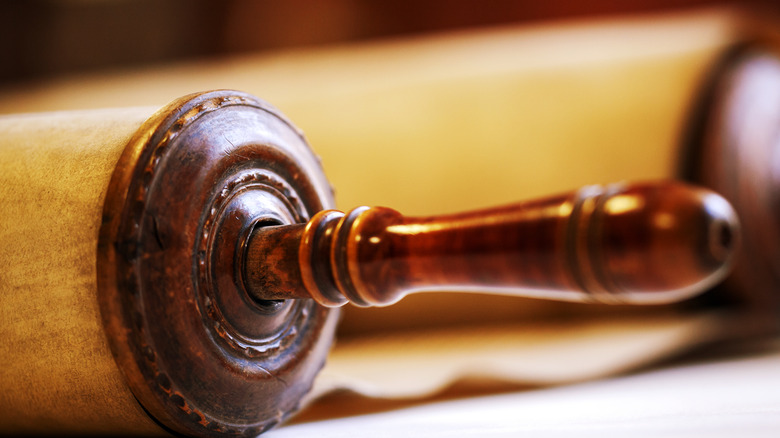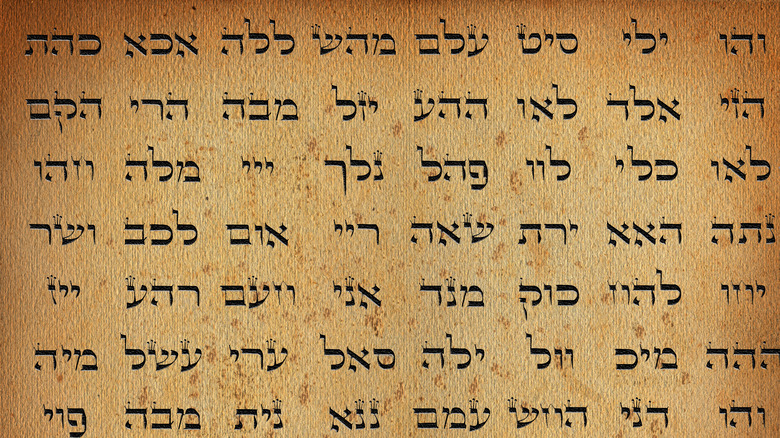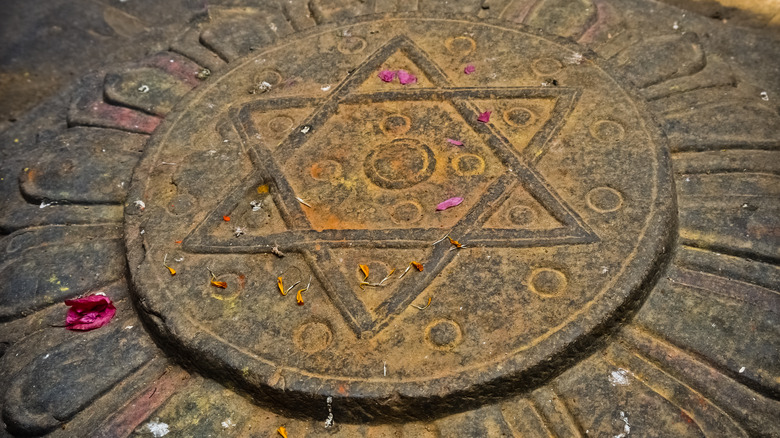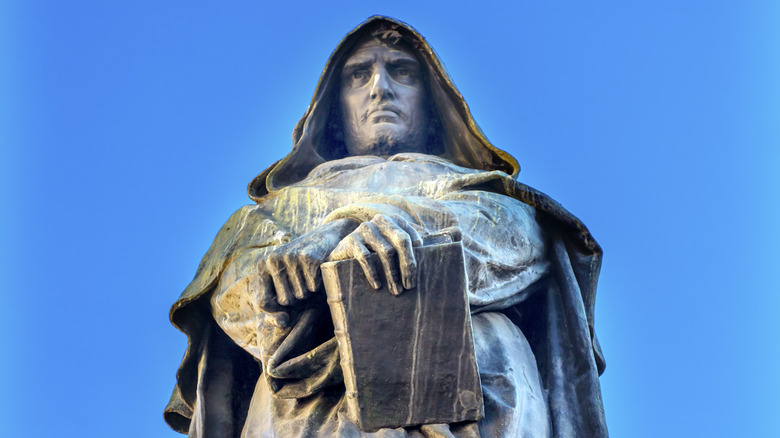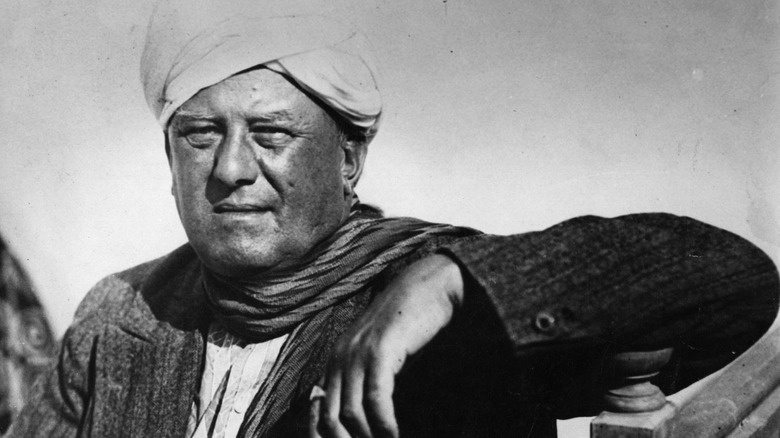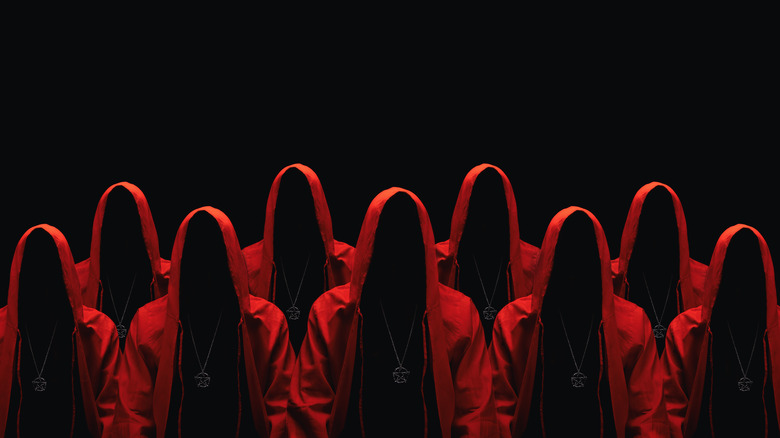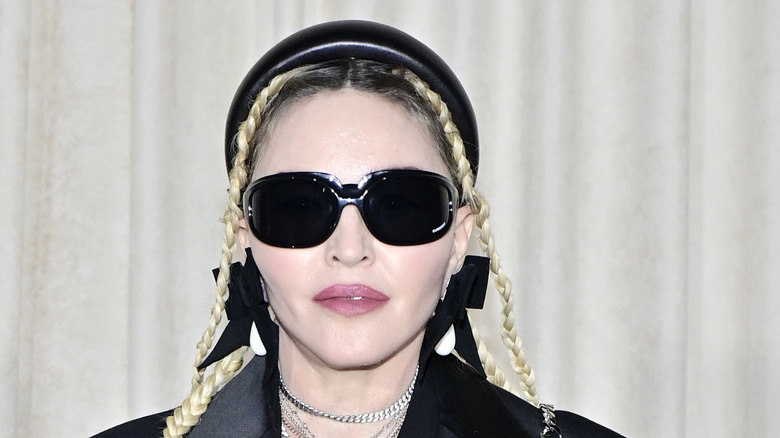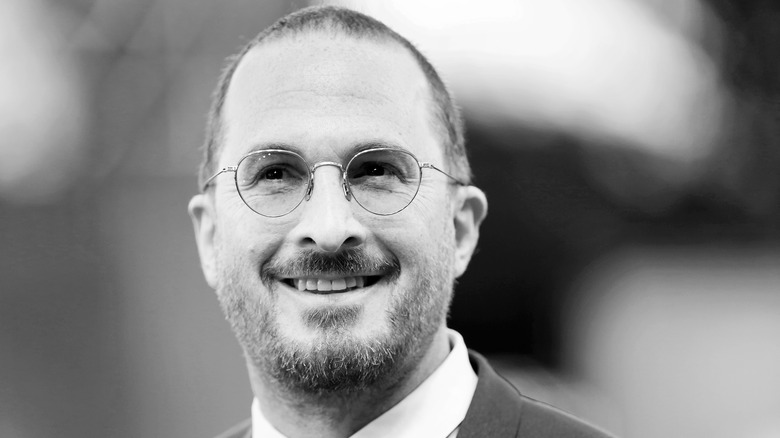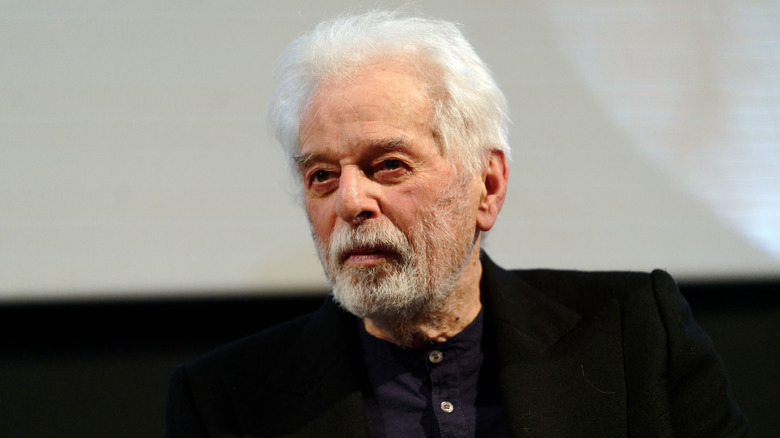The Untold Truth Of Kabbalah
The Kabbalah is an ancient Jewish system of metaphysics and mysticism, riddled with obscure applications and origin stories. According to Rabbi Geoffrey W. Dennis in his work, "What is Kabbalah?," he highlights the Kabbalah's intended use as an esoteric roadmap to higher planes of existence in the physical, mental, and spiritual sphere of an individual, with the goal to become closer to God.
The study of Kabbalah contains many secrets and nuances. This trickiness puts its adepts in a continual state of struggle to solve an ever evolving Rubik's cube of spiritual puzzles. If this sounds like confusing metaphor, it is because it is. The Kabbalah has evolved from an oral tradition into written texts, while maintaining its metaphysical relevance and wonder over time. The riddle of the Kabbalah remains open and largely unresolved. This is why so many people have studied it, with celebrities and Hassidic Jews alike still trying to learn its secrets today.
According to The Kabbalah Centre, the Kabbalistic tree itself is a path from mortality and physicality to divinity and eternity. Herein lies some of the more interesting history, mysteries, and applications of the Kabbalah and how its path has been applied throughout time.
It began as an oral tradition
The Kabbalah's origin date is unknown, but it can at the very minimum be linked to the birth and lifespan of the Old Testament. Its origin is clouded in mystery at least partially due to the lack of original writings surrounding the subject. As Britannica notes, this is because the Kabbalah initially existed solely as an oral tradition, deemed exclusive for the spiritually advanced within the Jewish community. The few who were found worthy were initiated through an esoteric telling of Ezekiel's vision of God on a throne or chariot of fire. This was taught verbally with the intent on how to replicate that vision of God through occult techniques, known as Maaseh Merkavah, according to the Jewish Chronicle.
As Britannica points out, linguistic ability was used for far more than just talking. It allowed humans to store experience and transmit all kinds of useful information to one another. Oral tradition before the written word was a way to formalize institutions and systems and remained the primary way to transmit Kabbalah teachings and philosophy for some time.
However, when the teachings of the Kabbalah began to spread throughout Europe, this created a growing desire for clarification between the esoteric and exoteric forms of Judaism. Through this momentum, more rabbis and Kabbalistic mystics started developing controversial techniques of exploring consciousness from the oral tradition in which they were taught. And soon, these teachers were recorded their teachings, as per the World History Encyclopedia.
The first written text came from Spain
Historians at Harvard's Pluralism Project generally agree that the Kabbalah was first written down around the 13th century and subsequently spread throughout certain European countries. This solidified its primary text, the Zohar, which is a collection of Aramaic medieval texts combined together as a reading guide to understand the mystical side of the Torah, as per My Jewish Learning."
Gershom Gerhard Scholem notes in his book, "Origins of the Kabbalah," that these first written texts sprang up from southern France and Spain. Most historians and scholars agree that arguing that the Zohar was written by Moses de Leon of Castille in 1286.
Some scholars argue that the Zohar may have been written earlier. The important takeaway though is that Kabbalists now had a working text to draw knowledge from while on their quest towards God, and it was like nothing ever written before. As Alexander Nazaryan of Newsweek puts it: "Imagine the Old Testament as written by H.P. Lovecraft, Bible stories tripping on acid, rendered in difficult-to-decipher Aramaic, full of wisdom and beauty but shrouded in obscurity."
It talks about sex and God's sexuality
So what exactly inside the Zohar makes it so strange and so controversial? To start, the book lays out the tree of life, the branches of which symbolically represent attributes of God, as per World History Encyclopedia. Slate points out that each of the 10 branches, known as Sefirot, have a corresponding Hebrew character linked to them for deciphering the Torah.
According to Kabbalah scholar Daniel Matt, the Zohar presents God as both male and female. And there is evidence of such within the Sefirot, as both sides of the tree of knowledge containing the Sefirot are divided into each gender, as per the Jewish Virtual Library. World History Encyclopedia also notes that the Sefirot can be interpreted as parts of the body, so with God as both male and female, you see the direction that's going.
Another important and eccentric part of the book is the level of sexual scripture, which shows an openness that orthodox religion lacked at the time. As Matt notes, the Zohar conveys how sacred human sexuality is, with sex bringing people closer to the divine.
Kabbalists have been burned at the stake
Not everyone was thrilled to have Kabbalistic teachings and orators roaming the public circle, especially in 16th century Rome, Italy. According the Sixteenth Century Journal, Giordano Bruno, a Hermetic Kabbalist, was an outspoken occultist, philosopher, and mathematician. Bruno theorized a heliocentric model of the universe and believed in aliens, notes Rice University, and thought stars to be other suns for other worlds (via Scientific American).
Unfortunately for Bruno, this type of philosophizing was at stark odds against the Roman Catholic Church and their inquisition program of blasphemy (via History). In 1600, Bruno was convicted of heresy by the inquisition and subsequently burned at the stake, as per the Standford Encyclopedia of Philosophy. This execution was directly related to his Kabbalistic publications and theories about the universe, which clearly challenged the Christian narrative of the time.
After his death and to this day, Bruno is considered a martyr for multiple things, one being for science, according to Scientific American. Even though some of his theories were deluded with spiritual conviction, he still was able to use the teachings of the Kabbalah and come to a handful of amazing scientific conclusions that are still pondered today, including concepts like the multiverse.
Aleister Crowley was obsessed with the Kabbalah
Infamous occultist Aleister Crowley was obsessed with the Kabbalah and wrote extensively on the spiritual subject, including his magnum opus, "777 And Other Qabalistic Writings of Aleister Crowley." The manuscript is ripe witth new takes on old wisdom, presented in an open manor of occultism for the various spiritual groups springing up in the early 20th century.
In true Crowley fashion, he published another book titled "The Book of Lies" in which he presents Kabbalistic poetry filled with riddles and puzzles. They are beautiful and profound at times, until you start applying a Kabbalistic lens over its pages.
According to the devout Crowley scholar Robert Anton Wilson, "The Book of Lies" is full of jokes. "In every chapter there are jokes within jokes ... many times you'll find a passage where the surface meaning is conventionally religious ... and then you suddenly discover there's a dirty joke hidden under that."
Demons pervade the Zohar
The Zohar is not all love and light. It explores all aspects of existence, including the darker side of reality. Kabbalists are made aware of many demons by name because the Zohar dedicated a number of its pages to what is know as the Sitra Ahra (the Other Side).
In a 2011 interview with Rabbi Alan Brill, Daniel Matt discusses the role the demonic forces and unsavory aspects that the Kabbalah serve individual students who are supposedly on a mission towards God. "I'm not offended by the demonology of the Zohar. I see it as an expression of human fear. i don't deny that the Zohar includes 'nasty' elements," he states. He elaborates further that there is a need for a shadow in order to reveal light found within the sacred book.
However, other scholars and Kabbalists place heavier emphasis on the danger and importance of the demons in the Zohar, beyond mere expressions of human fear or a balancing act of good and evil. In Mattias Guidugli's "Demonology of the Kabbalah," the Sitra Ahra is the inverse of the 10 Sefirot. Each of these 10 are ruled by demonic forces that can be accessed the same way the Kabbalah allows a pathway to God, except these spheres and forces are ruled and led instead by the powerful demons Samael and Lilith.
The Zohar extensively explores the nature of demons, from their physio-spiritual constitution to their categories of existence. This ranges from entities able to contact the human realm and others that only exist at certain times of day and night.
Madonna is a dedicated student
Remember her red bracelet? When it comes to the new age version of the Kabbalah, Madonna perhaps was queen of its promotion and practice. While she is only one of many celebrities reported by ABC News to be attracted to this old science of metaphysics, Madonna was a regular attendee at the Kabbalah Centre in Los Angeles, California, reports the Los Angeles Times, and quickly rose through the group's ranks. This caused quite a stir amongst Hollywood elites and thralls alike, hyper-focusing on her fascination with the Kabbalah for years.
In an interview Madonna did with Rolling Stone, she simply said, "You would think that studying the mystical interpretation of the Old Testament and trying to understand the secrets of the universe was a harmless thing to do."
The increased interest and membership in the Kabbalah Centre not only unearthed newfound interest in the Kabbalah but also shed light on some rather questionable behavior behind the high-profile center of secret study, as detailed in the Los Angeles Times.
Kabbalah gave rise to the New Age movement
The depiction of the Sefirot as the Tree of Life is an accurate one when it comes to the Kabbalah, because so many other metaphysical and New Age spiritual practices stem from its branches. Everything from astrology to the tarot all have their roots in the Kabbalah. It is the basis for practically all western occultism, from Éliphas Lévi's work, gnostic and hermetic traditions, to more modern mystery schools like Theosophy, according to Boaz Huss in "Academic Study of Kabbalah and Occultist Kabbalah."
Each branch or sphere of the Sefirot has a corresponding planetary archetypal ruler, linking astrology to the Kabbalah beyond its ties to general cosmology, as per Kepler College. The tarot, while also obscure in its origin, has proven to lay itself perfectly into the Zohar and Kabbalah, with the 22 letters of the Hebrew alphabet corresponding to the 22 cards of the major arcana of the divination deck, as elaborated on by the International Initiation School.
The movie Pi is inspired by the Kabbalah
In 1998 director Darren Aronofsky released "Pi," a neo-noir psychological thriller film concerned with numerology, mathematics, and the infamous master key to the universe, the Kabbalah, as per Roger Ebert. Aronofsky's main character, Max Cohen (Sean Gullette), goes insane over the course of the movie trying to combine his genius level of mathematical understanding with that of the ancient numerological system of the Kabbalah shown to him by a group of Hassidic Jews.
The major goal of the main character was to discover the secret word of God. In an interview with ChitChatMagazine, Aronofsky addresses the people actually involved in making the film that were Kabbalists and how he first was introduced to the Kabbalah. "When we started working on 'Pi' and putting these elements into the film, I used my Hassidic connections in Brooklyn to get to some of the leading Kabbalah scholars in the world. ... They shared a lot of their secrets with me, and a lot of their stories. There's some stuff that would blow your mind and we brought that to Pi. Everything in the film is completely, 100% true."
Alejandro Jodorowsky's film was a Kabbalistic fever dream
While Alejandro Jodorowsky's iteration of "Dune" may have failed as a film, he did however succeed in making one crazy (oc)cult classic, "The Holy Mountain," a mind-bending Kabbalistic journey of a protagonist on the quest for enlightenment.
In stark contrast to Darren Aronofsky's black and white "Pi," Jodorwosky's "The Holy Mountain" is a psychedelic world of color, using it to his advantage to hint to the subtleties of the Kabbalah he is introducing, as per the "Routledge Companion to Cult Cinema." The film is ripe with tarot cards, astrological symbols, and a hero's journey through the Kabbalistic tree of life put into film like no other.
When asked about his introduction to Jewish mysticism in an interview conducted by Literary Hub, Jodorwosky said, "I'm adept when it comes to the tarot, but not for telling the future. For me, the tarot was an optical language, and when I delved into magic, into Eliphas Levi and related subjects, I found Kabbalah experts who initiated me."
